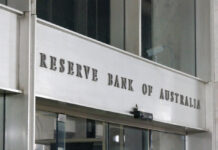Markets
Key US equity indices lost another 2% on Friday and more importantly high-level support marks. The S&P fell below the neckline of a triple top formation at 4495, suggesting more downward potential towards the October low of 4279 with the final target of the technical formation even at 4172. The tech-index Nasdaq was already in correction modus (>10% from all-time top in November), but now lost the neckline of a huge double top formation which served as resistance in H1 2021 (14175). The move lower suggests more downward potential towards 12552 (38% retracement since March 2020) and even the low 12 000 area (final target double top).
The dominant reason for this year’s risk correction is obviously the surge in real rates because of the accelerated global push towards (central bank) policy normalization.
It automatically brings us to this week’s main event: Wednesday’s FOMC policy meeting. We expect the Fed to lay the groundwork for a 25 bps March rate hike/lift-off. Abruptly ending net asset purchases (normally tapered down to zero in March) is a wildcard. We currently take into account a scenario of four consecutive 25 bps rate hikes in the US central bank’s inflation battle, before allowing for a pause once the central bank puts in motion pillar two of its normalization process: shrinking the balance sheet at stealth pace. Rapidly deteriorating inflation dynamics probably imply that risks surrounding this scenario are probably tilted to the hawkish side. This means potentially more and/or bigger rate hikes and a sooner start to winding down the balance sheet Last week’s risk aversion ended the sell-off on bond markets who took up their role as safe haven assets. The US yield curve bull flattened with yields losing 2.2 bps (2-yr) to 4.5 bps (30-yr). German yields fell by around 4 bps across the curve. 10-yr yield spread changes vs Germany widened by up to 3 bps for Greece and Italy.
The trade-weighted dollar lost on points, closing at 95.64 from an 95.81 open. CHF, JPY and EUR were the main beneficiaries (in that order) from the risk-off spell. EUR/GBP was short squeezed higher to test first resistance at 0.8381 in combination with horrible December UK retail sales.
Today’s eco calendar contains January PMI numbers, but we doubt they’ll be able to steal the spotlight from risk sentiment and the approaching FOMC meeting. From the weekend, we retain comments by ECB governing council member Rehn in Handelsblatt saying that a 2023 rate hike would be the logical thing to do apart from any new economic disruptions.
News Headlines
Members of both houses of Italian Parliament and regional representatives start the potentially lengthy presidential election process today. To be appointed, a candidate needs a two-third majority in the first three rounds of the vote or a simple majority later in the process. The role of Italian President is mainly ceremonial, but the head of state controls key steps in the Italian political process including nominating the Prime Minister or dissolving parliament. PM Mario Draghi is in pole position to get the job. However, some of the parties currently supporting his government, said that Draghi leaving the post of PM would be a risk to political stability in the country. The vote is secret and some parties didn’t give public guidance. So, the outcome remains uncertain. Former PM Silvio Berlusconi this weekend stepped out of the race as a candidate for the job.
In response to questions posed by Bloomberg, Head of the National Bank of Poland Glapinski said that he wants to convince members of its MPC to take a more aggressive approach on inflation and to raise interest rates more than markets currently anticipate. The comments came after stronger than expected industrial production (16.7% Y/Y for December) and wage data (+11.2% Y/Y) on Friday. The Polish policy rate has been raised to 2.25% after four consecutive rate hikes as inflation accelerated faster than expected (8.6% Y/Y in December). Today, Polish retail sales data are scheduled for release. The zloty late on Friday reversed most of its intraday, risk-off driven losses after the Glapinski headlines hit the screens. EUR/PLN this morning trades in the 4.525 area.












